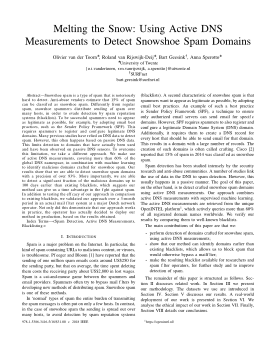As of August the 30th I may call myself a Master of Science (MSc.). At that date I have successfully defended my thesis titled “Combating Snowshoe Spam with Fire”. People have often asked if ‘Fire’ is some kind of an acronym, it ain’t 😉
In the thesis we detail how DNS configurations may be used to track down snowshoe spam domains. Snowshoe spam spreads out the sending over a great number of hosts to reduce the volume per host, making the individual hosts harder to detect and blacklist.

